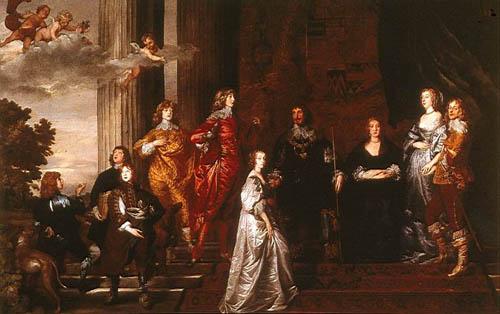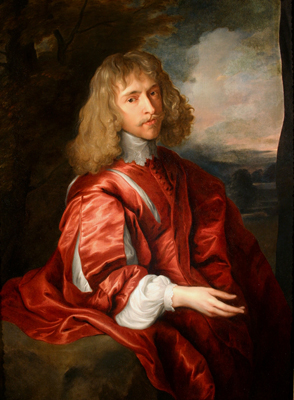Annotation:Lord of Carnavon's Jig (2): Difference between revisions
No edit summary |
No edit summary |
||
| Line 2: | Line 2: | ||
{{TuneAnnotation | {{TuneAnnotation | ||
|f_tune_annotation_title= https://tunearch.org/wiki/Annotation:Lord_of_Carnavon's_Jig_(2) > | |f_tune_annotation_title= https://tunearch.org/wiki/Annotation:Lord_of_Carnavon's_Jig_(2) > | ||
|f_annotation='''LORD OF CARNARVAN'S JIG [2].''' AKA - "Lord Carnavan's Jigg." English, Country Dance Tune (cut time). G Major. Standard tuning (fiddle). AA'BB'. "Lord of Carnarvan's Jegg," a spirited dance for four couples, appears in the first edition of John Playford's '''English Country Dancing Master''' [http://www.izaak.unh.edu/nhltmd/indexes/dancingmaster/] (London, 1651), and in all subsequent editions through the 17th, of 1721 (then published by John Young). More than seventy years after Playford's original publication, John Walsh printed a set similar to Playford's in his '''Compleat Country Dancing-Master''' (London, 1731, No. 148). Samuel Bayard finds an earlier version of the melody in the Scottish '''Skene Manuscipt''' (c. 1615) as "Blew/[[Blue Ribbon Scottish Measure]]," and says a much later version is printed in Gow's '''Complete Repository''' (II, 1802, 4,5) under the title "[[Blue Ribbon Scottish Measure]]." Bayard thought the style of the air sounded Scottish. | |f_annotation='''LORD OF CARNARVAN'S JIG [2].''' AKA - "Lord Carnavan's Jigg." English, Country Dance Tune (cut time). G Major. Standard tuning (fiddle). AA'BB'. "Lord of Carnarvan's Jegg," a spirited dance<ref>The word 'jig' does not refer to the 6/8 time tune, but rather the old convention of 'jig' as meaning a lively dance movement or fidgeting movement. The word, as ''gigue'' is still used in Quebec today to refer to duple or irregular meter tunes for dancing. </ref> for four couples, appears in the first edition of John Playford's '''English Country Dancing Master''' [http://www.izaak.unh.edu/nhltmd/indexes/dancingmaster/] (London, 1651), and in all subsequent editions through the 17th, of 1721 (then published by John Young). More than seventy years after Playford's original publication, John Walsh printed a set similar to Playford's in his '''Compleat Country Dancing-Master''' (London, 1731, No. 148). Samuel Bayard finds an earlier version of the melody in the Scottish '''Skene Manuscipt''' (c. 1615) as "Blew/[[Blue Ribbon Scottish Measure]]," and says a much later version is printed in Gow's '''Complete Repository''' (II, 1802, 4,5) under the title "[[Blue Ribbon Scottish Measure]]." Bayard thought the style of the air sounded Scottish. | ||
<br> | <br> | ||
<br> | <br> | ||
Revision as of 14:40, 27 September 2022
X:1 T:Lord of Carnarvan's Jegg [2] M:C| L:1/8 S:John Playford - English Country Dancing Master, 1st edition (London, 1651) K:G B2G2 Bc d2|c2A2 ABcd|B2G2 d2 ef|1 g4 d4:|2 g4 d2 ef|| |:gfed g3B|A2A2 c2 dc|B2G2b2a2|1 g4 d2 ef:|2 g4 d4||
LORD OF CARNARVAN'S JIG [2]. AKA - "Lord Carnavan's Jigg." English, Country Dance Tune (cut time). G Major. Standard tuning (fiddle). AA'BB'. "Lord of Carnarvan's Jegg," a spirited dance[1] for four couples, appears in the first edition of John Playford's English Country Dancing Master [1] (London, 1651), and in all subsequent editions through the 17th, of 1721 (then published by John Young). More than seventy years after Playford's original publication, John Walsh printed a set similar to Playford's in his Compleat Country Dancing-Master (London, 1731, No. 148). Samuel Bayard finds an earlier version of the melody in the Scottish Skene Manuscipt (c. 1615) as "Blew/Blue Ribbon Scottish Measure," and says a much later version is printed in Gow's Complete Repository (II, 1802, 4,5) under the title "Blue Ribbon Scottish Measure." Bayard thought the style of the air sounded Scottish.


- ↑ The word 'jig' does not refer to the 6/8 time tune, but rather the old convention of 'jig' as meaning a lively dance movement or fidgeting movement. The word, as gigue is still used in Quebec today to refer to duple or irregular meter tunes for dancing.

